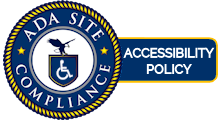What is a scalp massager? What are the benefits of using one?
A scalp massager is a tool with thicker and longer bristles (or nodules) than the average hair brush, which offers more of a kneading sensation. That provides two worthwhile benefits: One, it boosts circulation to the scalp, which can “nurture and deliver the necessary nutrients to the hair follicle for optimal hair growth,” says trichologist Bridgette Hill.
Moreover, a scalp massager “aids with exfoliation, removing dead skin cells and product buildup from the base of the hair follicle,” Hill says. Theoretically, this allows any scalp-minded formulas—be they oils, scrubs, or pre-shampoo treatment—you apply during or after the scalp massage to better penetrate the skin.
And finally, scalp massagers offer an advantage in their ability to reduce stress, since the very act of massaging the scalp can feel calming. “Stress, of course, can cause hair loss through shedding,” says Christine Shaver, a board-certified dermatologist at Bernstein Medical Center for Hair Restoration in New York City. You might be able to stymie its effects by addressing that via a scalp massage.
Who should use a scalp massager?
Everyone can benefit from using a scalp massager, although the type of tool and exact regimen largely depend on your scalp condition and hair type, according to Hill, who recommends using one at least weekly. That said, if you have a medical scalp condition, it’s best to skip scalp massaging; Hill recommends checking with a trichologist or a board-certified doctor first.
Scalp massage can be particularly helpful for those who have thick or coarse hair, as they may “find it difficult to adequately clean and exfoliate dead skin cells on the scalp,” says Shaver. That said, Types 3 and 4 curls and coils can make it hard to navigate the scalp massager around the head. In this case, Hill recommends sectioning hair into quadrants and then plaiting or twisting the ends together. Apply a pre-shampoo scalp treatment to each quadrant, ensuring your hair has a generous coating and lightly massaging it in with your fingertips to distribute it. Then, beginning at the nape of the neck, use the scalp massager to make semi-circle motions up and around the head. Repeat two or three times before shampooing, then rinse.
What to Look for in a Scalp Massager
Ideally, seek out a scalp massager that uses durable materials, such as silicone, and features soft, flexible bristles “so that they do not irritate or injure your scalp,” says Shaver. An ergonomic handle can also reduce strain and make the process more comfortable.
Ultimately, consider how you plan to use the scalp massager in your day. Will it be a moment of peace, or are you looking for efficiency? “There are many types of scalp massagers—electrical brushes, brushes with bristles similar to a wet or detangling brush, or those with more of a gua sha or pressure-point technique,” says Hill. “The first step is to spend some time identifying what part of your day scalp massaging might work best for you.”
Do scalp massagers promote hair growth?
Scalp massagers can help maintain healthy hair, but their exact connection to hair growth is hazy at best. “Scalp massagers can help improve circulation to the scalp, but that does not necessarily translate into promoting hair growth,” Shaver explains. That’s because hair loss often isn’t the result of a lack of nutrients to the hair follicles but rather a matter of hormones; in the case of genetic hair loss, for instance, the follicles are sensitive to a hormone called dihydrotestosterone.
As a result, simply massaging your scalp won’t necessarily increase hair growth. However, there’s still a silver lining. “Scalp massage can help to alleviate stress, which can lessen the impact of stress-related hair loss and the resultant shedding,” says Shaver.
What products should you use with a scalp massager to promote hair growth?
If you’re seeking longer or thicker hair, Shaver suggests pairing your scalp massager with products proven to promote growth. For instance, “the FDA-approved medication minoxidil can actually stimulate hair growth and can be applied before or after scalp massage,” she says. Meanwhile, if you have a dry scalp, she recommends using it with oils to aid with hydration; try this ahead of shampooing hair so as not to leave the roots greasy and flat. (Some essential oils, such as rosemary oil, may also encourage hair to grow.)
Finally, for those who have product buildup—dedicated dry-shampoo users among them—Shaver recommends using the scalp massager with an exfoliating scalp product or a treatment with salicylic acid. Doing so “can help break up and remove dead skin cells, thus cleaning the scalp,” she says.
Meet the Experts
- Bridgette Hill is a certified trichologist and founder of Root Cause Scalp Analysis.
- Christine Shaver is a board-certified dermatologist at Bernstein Medical Center for Hair Restoration in New York City.




